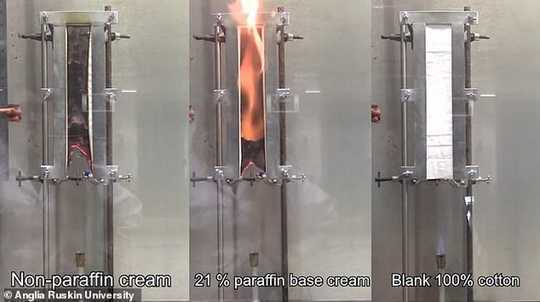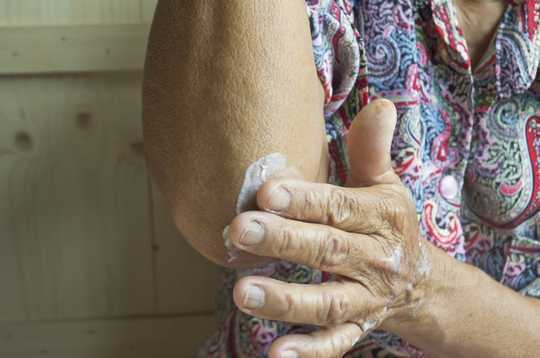Care providers were alerted to a house fire involving one of their patients at 4am on May 30, 2015. The fire and rescue services discovered a 74-year-old lady who had succumbed to a blaze that developed rapidly while she was still lying in bed. She had been bed bound, known to smoke in bed and was being treated for a skin condition.
A year later, a 61-year-old man who was also a smoker, bed bound and had emollient applied to his skin by carers was found dead in his bed after an intense fire. A year after that, an 82-year-old man died with third degree burns when his dressing gown came into contact with a lighter. He was also receiving daily applications of a cream and ointment.
What do all of these tragic deaths have in common? The victims were all being treated with creams for their skin conditions. While the fires were caused by smoking, the authorities reported that they were made more intense by the presence of these emollients.
A hidden danger
In the UK, one in five children and one in 12 adults will suffer from eczema and 2-3% of the population have psoriasis. Medical creams, lotions and ointments are widely used to treat these conditions and can be prescribed or bought over the counter. They often include instructions to apply liberally, with multiple applications during the day. This results in the product soaking into clothing, dressings and bedding.
Get The Latest By Email
Several deaths from fires have been linked with the use of these skin emollients. A BBC freedom of information request revealed that 37 fire deaths since 2010 have been linked to creams that contain paraffin. But fire reports don’t require such information to be included and not all fire services responded to questions. So the actual number of deaths and injuries may be higher.
It isn’t just products that contain lots of paraffin that pose a risk – those with a low paraffin content and even those without paraffin at all could be dangerous. Our research shows that all fabrics ignited quicker after contact with emollients – regardless of the paraffin level – than completely clean fabrics.
In our initial tests, we let a flame directly touch cotton sheeting that emollients had dried into for 24 hours. The fabric ignited too quickly to measure, but once we had the flame positioned 7cm from the edge of the soaked fabric, we found that ignition happened after only ten seconds, compared to over a minute with the same cotton sheeting that was completely clean.

Fabric test burns after 20 seconds. The non-paraffin cream ignited at eight seconds, the 21% paraffin base cream at 11 seconds and the clean cotton at 52 seconds. Sarah Hall, Author provided
The fabrics we tested included various thread counts of cotton and polyester blend sheeting and t-shirts – all are common in households and all ignite much quicker when skin creams are present. We also found that once the flame has extinguished, some of the fabrics smoulder for longer when the products are present – potentially burning for longer near the skin, causing significant burns and life-threatening injuries.
These findings have spurred the NHS and fire and rescue services to reassess their safety advice. Flammable residues are thought to be removed from fabrics if they’re washed at the highest temperature possible, but research is still ongoing.
It’s important to remember that these products – on their own and in containers – aren’t a fire risk. The risk emerges when fabrics are soaked with them and allowed to dry. As the creams have soaked into fabrics, reducing the time it takes for the garments to ignite, elderly and immobile victims haven’t been able to remove their clothing quickly enough to prevent injury or death.
People shouldn’t stop using much-needed medication, but they should know how to use the products safely. Our advice is to wash your clothes at high temperatures as often as you can to reduce the build up of the creams. Most importantly, keep any fabrics away from naked flames and cigarettes – you’re likely to have less time to react in the event of a fire than you think.![]()
About The Authors
Sarah Hall, Senior Lecturer and Head of the Forensic and Investigative Sciences Research Group, Anglia Ruskin University and Joanne Morrissey, Senior Lecturer in Crime and Investigative Studies, Anglia Ruskin University
This article is republished from The Conversation under a Creative Commons license. Read the original article.
books_health








